If you are working with Java, you will eventually encounter the need to structure and organize your programs. An important concept in this regard is methods. They are the heart of any application and allow you to create reusable and modular code structures. This tutorial demonstrates how methods work in Java using the vehicle class as an example.
Main insights
- Methods are important building blocks in Java.
- The basic structure of a method consists of return type, method name, and parameters.
- Getter and setter methods are essential tools for data manipulation.
- Method overloading allows you to define multiple methods with the same name but different parameters.
Step-by-step guide
Basics of methods
In a Java program, a method is a collection of statements that perform a specific task. The syntax of a method looks like this:
For example, if we want to create a method called drive, which returns nothing, the code looks like this:
Here, void is the return type, meaning that the method does not return a value.
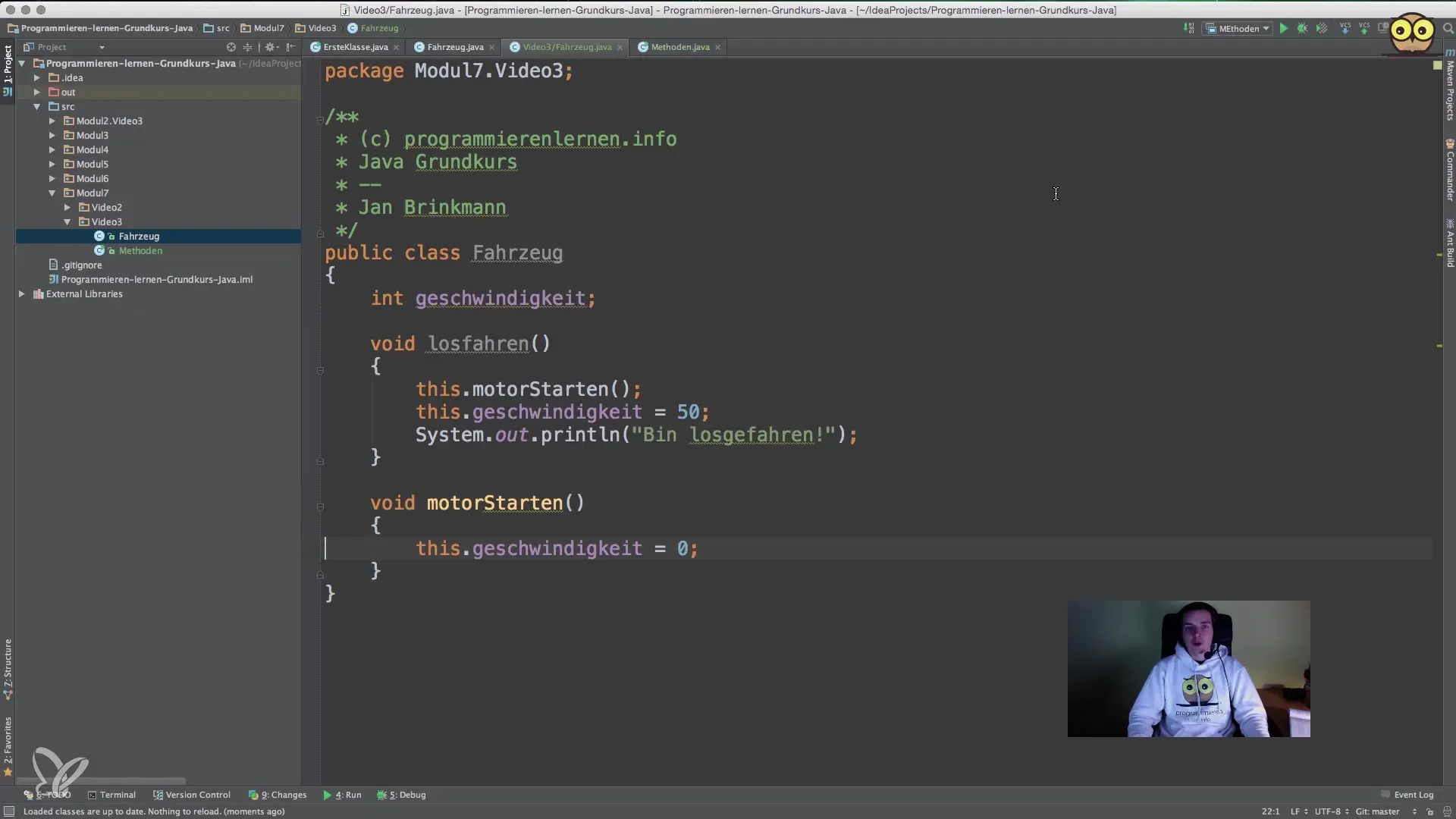
Parameters in methods
With methods, you can also use parameters that pass values to your method. An example would be a method brake, which also returns no values but performs an important action:
The method could set the speed to zero when the vehicle brakes.
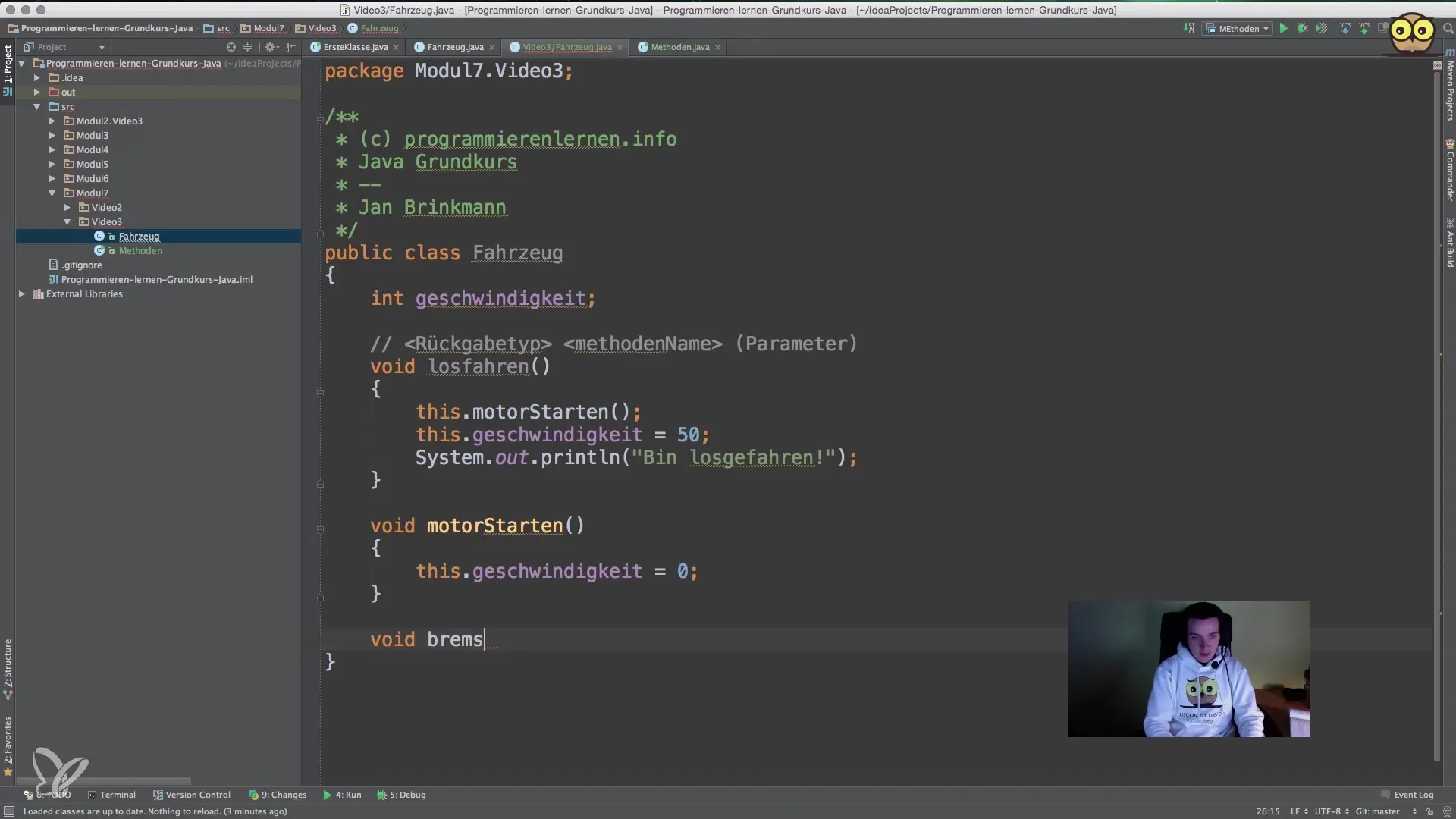
Return values and the return keyword
If you want a method to return a value, you specify the return type accordingly. Let's say you want to read the current speed.
Here we use the return keyword to return the value. This is an important concept for providing certain status information from objects.
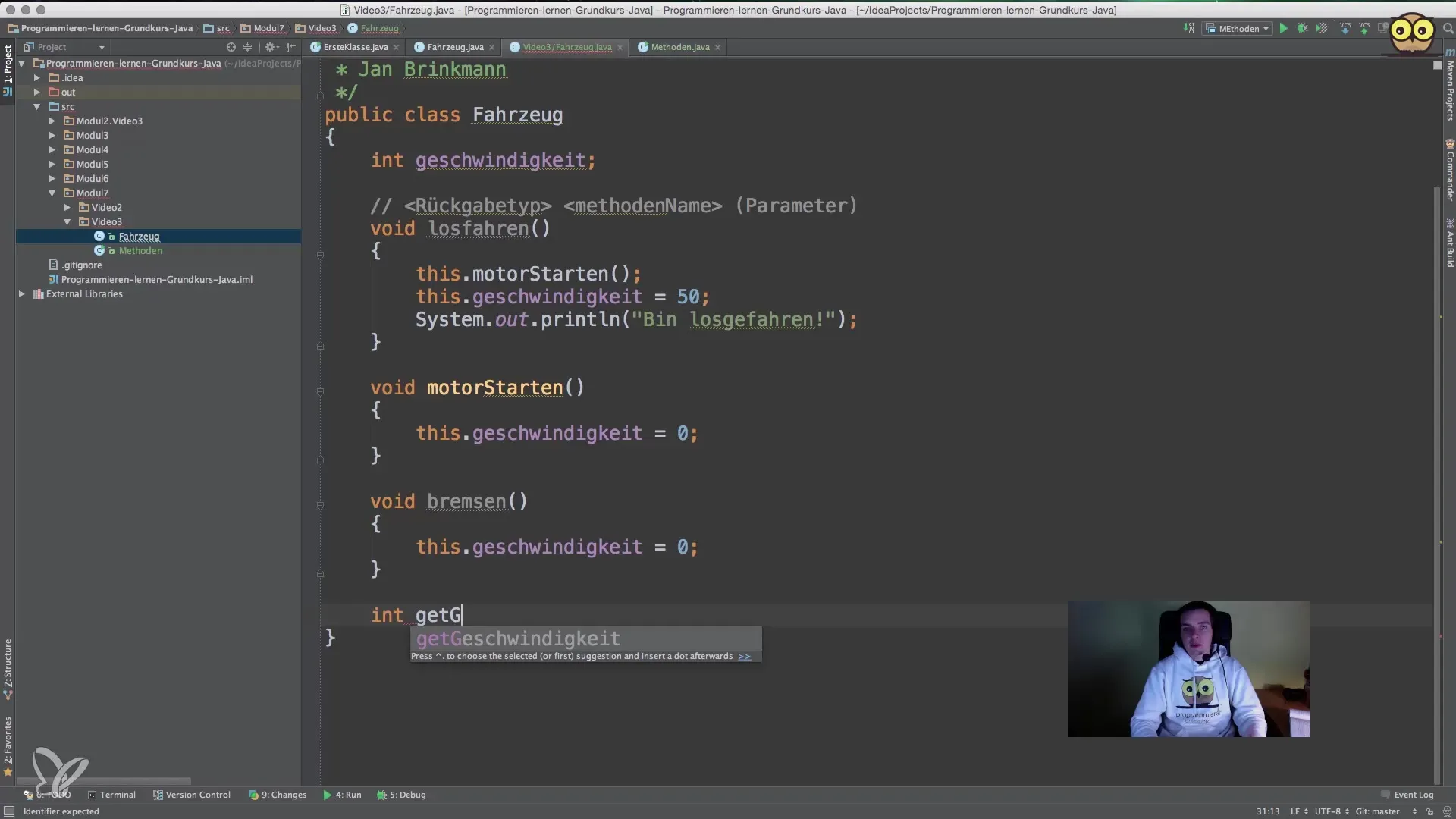
Setter methods
Setter methods allow the modification of values within a class. To set the vehicle's speed, you can implement a setter method.
With this method, the speed can be set from outside, helping you maintain control over the attributes of your instance.
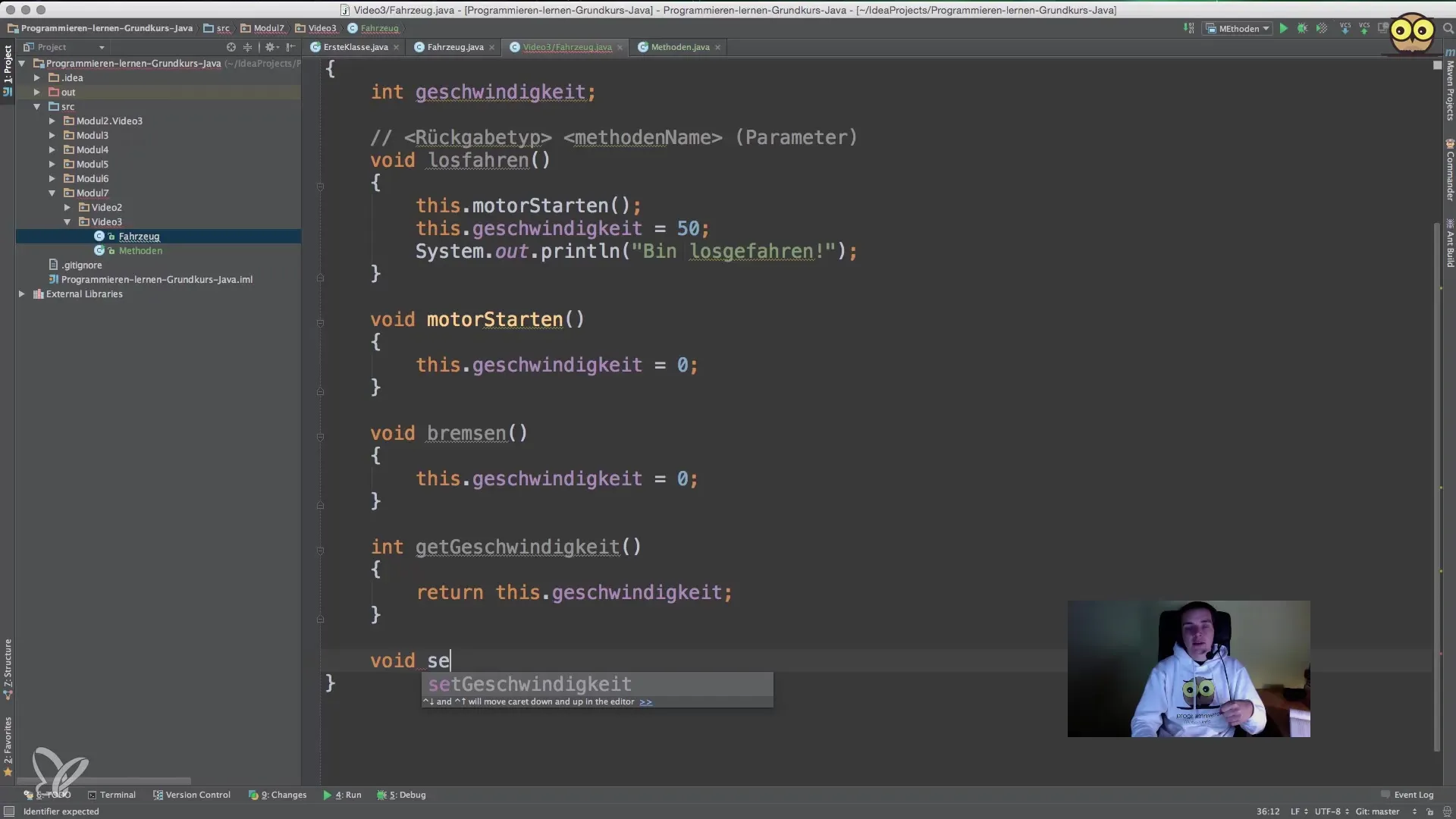
Method overloading
Another important concept you should know is method overloading. This means that you can have multiple methods with the same name as long as they have different parameters. For example, you could add another brake method that accepts a parameter.
Here you can define different braking behaviors depending on whether you pass a specific value or not.
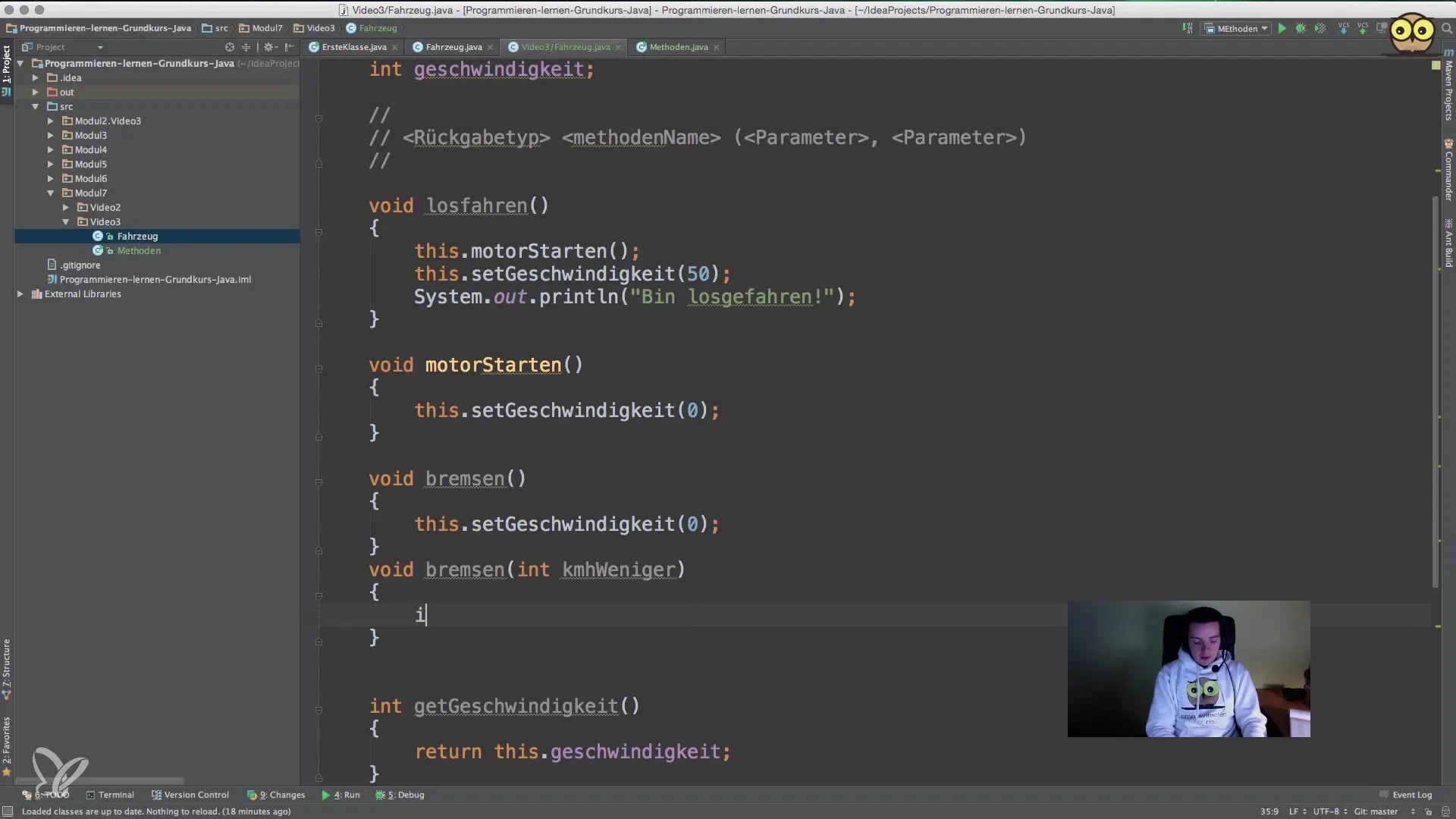
Application of methods
Now that you understand the basics of methods, you can use them in your vehicle class. For example, you would first start the vehicle.
Then you could call the brake method and pass a parameter to reduce the speed.
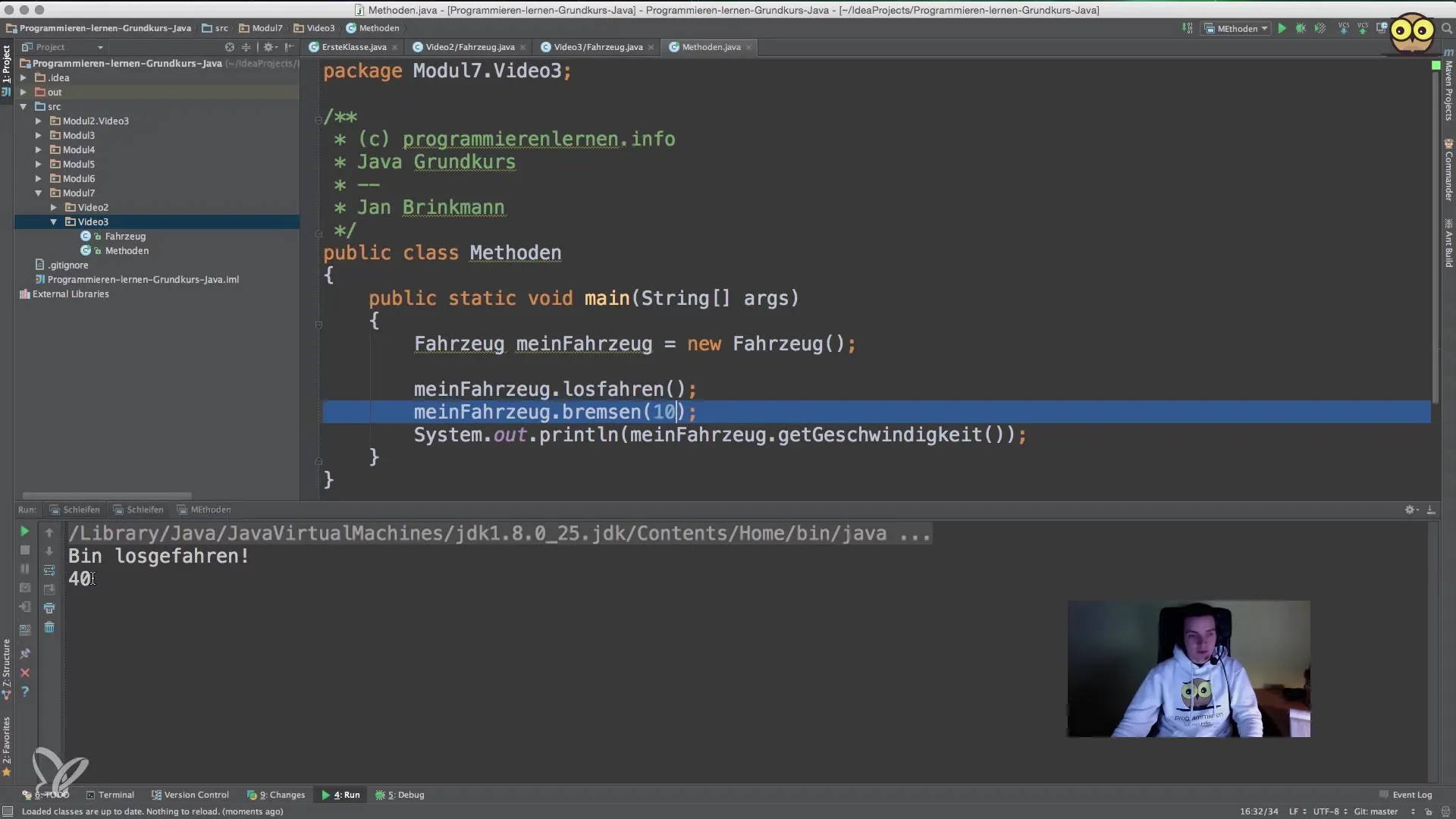
Summary – Methods in Java for Beginners: A Comprehensive Tutorial
In this guide, you have learned about the various aspects of methods in Java. You now know how to define methods, how to use return values and parameters, as well as the significance of getter and setter methods. Additionally, you have learned about the concept of method overloading and seen some examples of how to effectively apply methods in a vehicle class.
Frequently Asked Questions
What are methods in Java?Methods are blocks of statements that are programmed for specific tasks in Java.
How do I define a method?A method is declared with its return type, name, and optional parameters.
What is the difference between getter and setter methods?Getter methods read the value of an attribute, while setter methods change the value of an attribute.
What is method overloading?Method overloading allows you to create multiple methods with the same name that accept different parameters.
How do I call a method?A method is called by specifying the method name along with the required parameters in parentheses.


